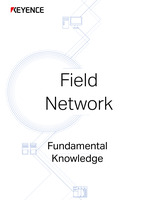PROFINET
This section explains PROFINET.
Overview
PROFINET is an industrial Ethernet protocol released by the PROFIBUS & PROFINET Association in 1999. As with PROFIBUS, it is managed by PROFIBUS & PROFINET International. (In Japan, it is promoted by the Japanese PROFIBUS Organization.)
Wiring Method and Communication Protocol
Wiring method
This network is wired based on general-purpose Ethernet. General-purpose Ethernet communication can be used on the same network.
Communication protocol
PROFINET manages an entire network using three different communication methods.
Characteristics
PROFINET manages communication by classifying it into three performance levels, allowing for high-speed synchronous control, such as motion control, and coexistence with general-purpose Ethernet communication.
NT (non real-time)
This TCP/IP-based communication has the lowest level of priority. NT is used for parameter reading and writing that do not need to be performed in real time.
RT (real-time)
RT data is prioritized over ordinary NT data in communication using the VLAN function, which builds a real-time network with a response time of approximately 10 ms.
IRT (isochronous real-time)
Timing among networks can be synchronized with jitter of 1 μs or less to achieve punctuality better than RT communication. To achieve IRT, it is necessary to use dedicated PROFINET ASICs and divide the communication band.
Related Networks
PROFIBUS
This is a network wired based on RS-485.
- Company, product, and network names mentioned on this page are either trademarks or registered trademarks of their respective companies.
- Note that some information, such as applicable standards and specifications, may have changed since this page was published.
November 2015






